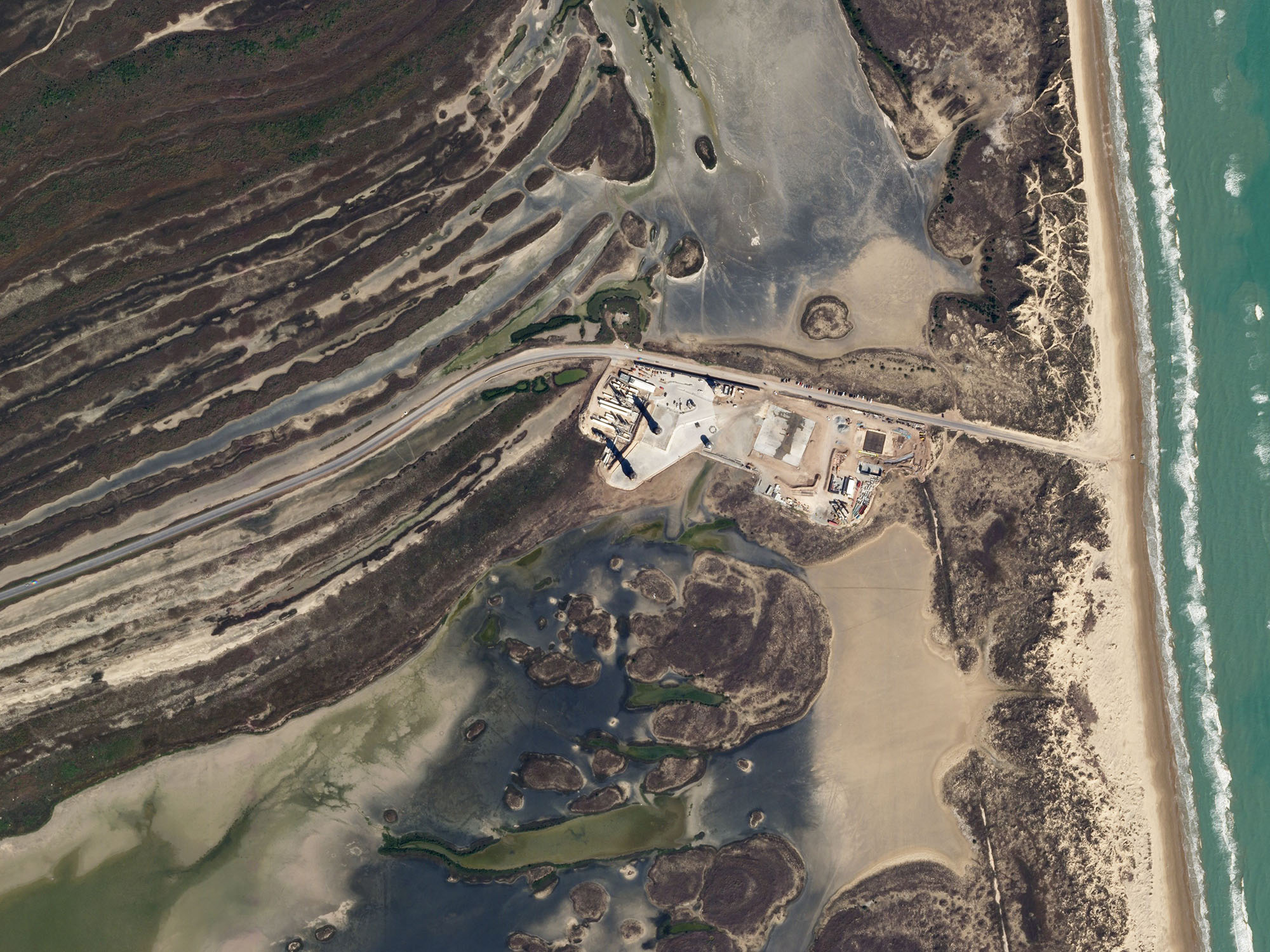Satellite spots SpaceX's Starship SN9 from space ahead of explosive test flight
New satellite imagery shows SpaceX's Starship prototype poised on the launch pad ahead of its high-altitude test flight Tuesday (Feb. 2), which saw the prototype crash-land after successfully completing complex maneuvers in flight.
A SkySat satellite operated by the San Francisco-based company Planet captured high-definition satellite images of Starship SN9 at the company's South Texas site, near the Gulf Coast, hours before the launch. The company's fleet of SkySats includes 21 individual machines in varying orbital locations, allowing for revisits of an imaging area roughly five to 10 times a day, Planet said on its website.
"SN9's sister ship is visible slightly above and to the right, and the landing pad is the concrete square closer to the beach," Planet wrote in a photo caption. "This high-resolution SkySat image reveals details of the test facility, even the color of individual cars and trucks parked nearby."
Related: SpaceX has two Starship prototypes on the pad at the same time
The Starship flight — which is under investigation by the Federal Aviation Administration after the FAA said the event violated a launch license — took place near the small community of Boca Chica Village. The 165-foot (50 meters) prototype went through much of its flight plan, including shutting down its three Raptor engines and making it to the target altitude of roughly 6.2 miles (10 kilometers).
SN9 also did a complicated horizontal flip that it would need to do during an optional reentry in Earth's atmosphere after an operational spaceflight. But it couldn't stick the landing and exploded into a fireball, similarly to predecessor SN8's fate on Dec. 9.
"We got a lot of good data, and the primary objective — to demonstrate control of the vehicle in the subsonic re-entry — looked to be very good, and we will take a lot out of that," SpaceX principal integration engineer John Insprucker said during SpaceX's launch webcast, while admitting the landing sequence will need more work.
Breaking space news, the latest updates on rocket launches, skywatching events and more!
Related: Here's what SpaceX's 1st spaceship to carry astronauts looks like from space (satellite photos)
And at an oblique angle just for fun :) pic.twitter.com/aQQOQ1gVfSFebruary 3, 2021
SN9 is the latest in a series of Starship prototypes in support of SpaceX's eventual goal of sending settlers and supplies to Mars. Another flight version, SN10, is about to start prelaunch testing.
Follow Elizabeth Howell on Twitter @howellspace. Follow us on Twitter @Spacedotcom and on Facebook.

Elizabeth Howell (she/her), Ph.D., was a staff writer in the spaceflight channel between 2022 and 2024 specializing in Canadian space news. She was contributing writer for Space.com for 10 years from 2012 to 2024. Elizabeth's reporting includes multiple exclusives with the White House, leading world coverage about a lost-and-found space tomato on the International Space Station, witnessing five human spaceflight launches on two continents, flying parabolic, working inside a spacesuit, and participating in a simulated Mars mission. Her latest book, "Why Am I Taller?" (ECW Press, 2022) is co-written with astronaut Dave Williams.


